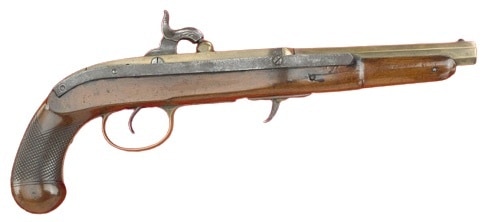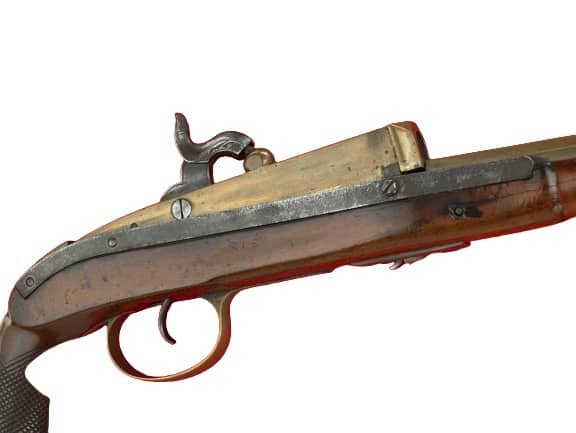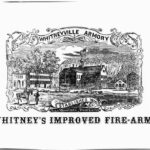
Introduction
Few names in early American firearms history are as significant as Simeon North and John Hall. These two men—working largely independently—pioneered the technological advancements that would forever change firearm manufacturing. Simeon North, a Connecticut-based gunsmith, played a crucial role in developing the first truly interchangeable parts system for pistols, while John Hall, a gifted inventor and engineer, introduced breech-loading mechanisms and precision milling techniques that laid the foundation for modern industrial production.
Though often mistakenly linked as direct collaborators on a single firearm, North and Hall did not jointly produce a specific "North/Hall Pistol." Instead, their individual contributions shaped military firearms of the early 19th century, influencing U.S. Army arsenals and transforming American industry. This article explores their respective innovations, the evolution of early U.S. military pistols, and how their pioneering work ushered in the American System of Manufacturing.
Simeon North: The Father of Interchangeable Parts in Pistols
The Model 1816 and Military Standardization
Simeon North (1765–1852) was a Connecticut-born gunsmith contracted by the U.S. government in the late 18th and early 19th centuries to produce military pistols and rifles. His most significant achievement was the introduction of interchangeable parts in firearm production, a radical shift away from the hand-fitted, custom-built weapons of the past.
The Model 1816 North Pistol—a .54 caliber, single-shot flintlock pistol—was one of his most notable military arms. Designed for U.S. dragoons (mounted troops), this pistol was a rugged and reliable weapon. While earlier flintlock pistols required custom-made parts that had to be fitted by gunsmiths, North employed precision machine tools, jigs, and fixtures to manufacture standardized components.

The Evolution of Precision Manufacturing
North’s approach to firearms production involved:
- Mass production of identical components, ensuring any part from one pistol could be used in another.
- Milling machines and machine tools to improve consistency and reduce human error.
- Government armory collaboration to perfect and expand the use of interchangeable parts.
The impact of these advancements was profound. The U.S. Army found that North’s standardized parts allowed for faster repairs on the battlefield, increased production efficiency, and laid the groundwork for the mass production of firearms at government arsenals like Springfield Armory.
John Hall: The Breech-Loading Rifle and Industrial Precision
Hall’s Revolutionary Breech-Loading Firearm
John Hall (1781–1841) is best known for his invention of the Model 1819 Hall Rifle, a groundbreaking breech-loading firearm. Unlike the muzzle-loading flintlocks of the era, Hall’s rifle allowed soldiers to load ammunition from the rear of the barrel, significantly increasing the rate of fire.
Though Hall experimented with interchangeable parts, his main focus was perfecting high-precision machine tooling to ensure the mass production of firearms. His work at Harpers Ferry Armory in the 1820s and 1830s became a proving ground for the mechanical production of identical parts, leading to:
- The use of precision milling machines, which dramatically improved firearm consistency.
- Government armory standardization, making his techniques a model for future arms manufacturing.
- A major leap forward in military logistics, as Hall’s rifles required less time for repairs and assembly.
Did Hall Influence Pistol Manufacturing?
While Hall was a firearms innovator, his work primarily influenced rifles rather than pistols. He developed a few experimental breech-loading pistol prototypes, but they were never widely adopted by the U.S. military. Instead, his machining principles were later applied to the mass production of pistols by manufacturers like Colt, Remington, and Smith & Wesson.
The American System of Manufacturing: A Legacy of Innovation
The Rise of Interchangeable Parts Beyond Firearms
Though interchangeable parts were first pioneered in firearms, the concept rapidly spread to other industries:
- Clockmaking (Eli Terry)
- Textile manufacturing (Samuel Slater)
- Steam engines and locomotives (Oliver Evans)
The Springfield and Harpers Ferry Armories became centers for manufacturing excellence, proving that mass production and standardization could scale beyond small artisan shops.
Military Adoption and the Spread of Precision Manufacturing
The U.S. military was initially hesitant to adopt these manufacturing innovations. However, after rigorous testing and demonstration, the War Department recognized that interchangeable parts and machine production would reduce costs, improve reliability, and accelerate weapon availability.
By the mid-19th century, this philosophy led to:
- The development of the Colt Revolver, one of the first truly mass-produced handguns.
- The expansion of U.S. armories, which equipped troops faster than European nations still relying on traditional gunsmithing methods.
- A transformation in American industry, influencing everything from automobile production (Henry Ford) to modern assembly lines.
Historical Impact and Modern Recognition
Firearms Evolution After North and Hall
By the time of the American Civil War (1861–1865), the ideas pioneered by North and Hall were fully realized in firearms like the Colt Model 1860 Army Revolver and the Spencer Repeating Rifle. These weapons were factory-produced, interchangeable, and highly efficient, proving the lasting impact of their early work.
Preserving the Legacy
Today, original North pistols and Hall rifles are prized collector’s items. They can be found in:
- The Smithsonian Institution
- The NRA National Firearms Museum
- Springfield Armory National Historic Site
Historians and firearms enthusiasts continue to study their designs, recognizing North and Hall as pioneers of modern industrialization.
Conclusion
The intertwined but separate legacies of Simeon North and John Hall shaped American firearms and industrial history.
- North perfected the use of interchangeable parts in pistols, ensuring standardization in military weapons.
- Hall introduced breech-loading and high-precision machining, laying the foundation for modern manufacturing.
Their work not only revolutionized firearms but catalyzed the American Industrial Revolution, influencing industries far beyond weaponry. Every time we marvel at the efficiency of today’s mass production, we owe a debt to these early pioneers—the Connecticut gunsmith and the Harpers Ferry machinist—who transformed innovation into an enduring legacy.
Read more about Simeon North here:

If you know of any forums or sites that should be referenced on this listing, please let us know here.




